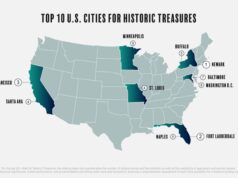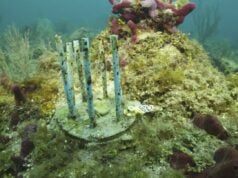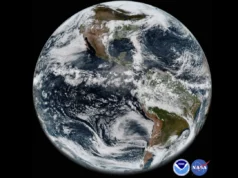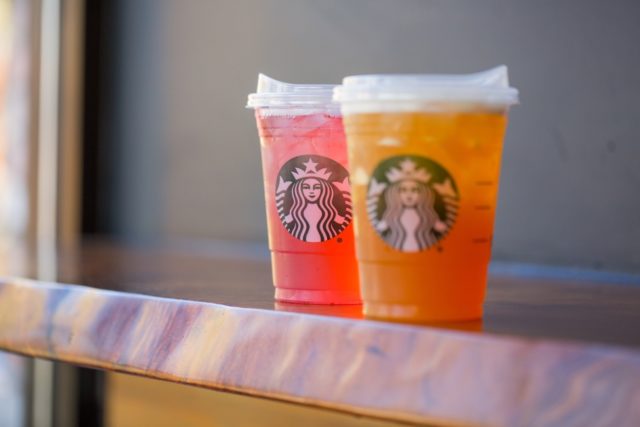
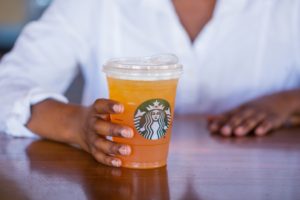
Alexander, an engineer in Global Research & Development at Starbucks, and her team set to work drawing up plans for a strawless lid that would showcase Starbucks’ Draft Nitro and its trademark cold foam that was being served at a Reserve store in Seattle.
For several weeks in 2016, Alexander would grab any available pen and a sheet of used printer paper when inspiration struck. She sketched and she sketched, working with a supplier in Wisconsin to conjure up complex designs including a two-piece twist-lock lid and a pull-tab lid that went nowhere (too busy). The versions that seemed most promising allowed customers to exult in the frothy foam, which Alexander calls “the hero of Nitro coffee.” Those anointed designs were then made into prototypes and shared with leadership, who would sit around, sip creamy foam through the lids and analyze their aesthetic. Ultimately, what emerged was a design that featured a teardrop-shaped opening about the size of a thumbprint — a cleaner, less-ridged version of a hot cup lid.
“We realized we had our lid after 10 weeks of experimenting,” said Alexander, who recently began a new role as a senior sourcing analyst in the Global Sourcing department.
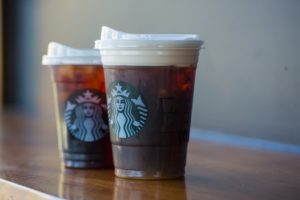
From their debut in one initial store, the cold-cup lids now are used for a small number of drinks including Draft Nitro and Cold Foam in more than 8,000 stores in the U.S. and Canada. They will become the standard lid for all iced drinks except Frappuccino, which will be served with a straw made from paper or PLA compostable plastic manufactured from fermented plant starch or other sustainable material. Customers who prefer or need a straw can request one made of alternative materials for use with any cold drink. Last year in Santa Cruz, Calif., Starbucks started testing out straws made from materials other than traditional plastic. It is now in the middle of testing paper straws in its U.K. stores.
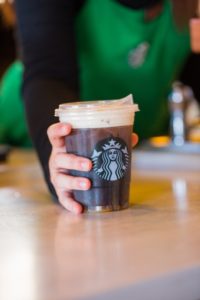
Seattle and Vancouver, B.C., customers will be the first to see the new lids replace single-use plastic straws, with other locations coming on board through 2020.
“Starbucks’ decision to phase out single-use plastic straws is a shining example of the important role that companies can play in stemming the tide of ocean plastic,” said Nicholas Mallos, director of Ocean Conservancy’s Trash Free Seas program. “With eight million metric tons of plastic entering the ocean every year, we cannot afford to let industry sit on the sidelines.”
The lid that is replacing the straws is also made of plastic, but its polypropylene content can be widely recycled. “By nature, the straw isn’t recyclable and the lid is, so we feel this decision is more sustainable and more socially responsible,” said Chris Milne, director of packaging sourcing for Starbucks. “Starbucks is finally drawing a line in the sand and creating a mold for other large brands to follow. We are raising the water line for what’s acceptable and inspiring our peers to follow suit.”
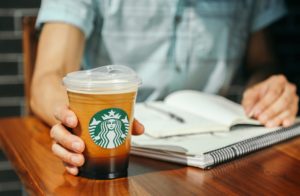
Eliminating straws is a response to requests from partners and customers, said Colleen Chapman, vice president of Starbucks global social impact overseeing sustainability. “This move is an answer to our own partners about what we can do to reduce the need for straws,” she said. “Not using a straw is the best thing we can do for the environment.”
Going strawless is just one of the ways that Starbucks is thinking through more sustainable approaches to single-use packaging. The company has invested $10 million in the NextGen Cup Challenge, which seeks to develop a fully recyclable and compostable hot cup.
Starbucks is also encouraging customers to BYOT — “bring your own tumbler” — as part of its efforts to reduce waste. In 2014, Starbucks began selling a $1 reusable cup in the U.S. The cups soon became available in Canada and the U.K. as well. More than 18 million have been sold. To further entice customers to bring their own tumbler, Starbucks is experimenting with a 5p paper cup charge in London; the charge will be extended to 950 stores in the U.K. later in July.
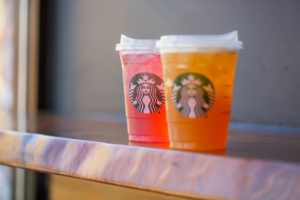
Developing a recyclable alternative to plastic straws is particularly important as Starbucks’ cold beverage offerings continue to increase in popularity. Five years ago, cold beverages comprised 37 percent of sales; by 2017, that figure had jumped to more than 50 percent.
“For our partners and customers, this is a significant milestone to achieve our global aspiration of sustainable coffee, served to our customers in more sustainable ways,” said Kevin Johnson, president and chief executive officer of Starbucks.
Alexander, the lead engineer, noted that there’s potential to further develop and improve the lid, capitalizing on the increasing array of compostable plastic and other sustainable materials. “The only place we can go is up and forward,” she said.
Source: Starbucks





